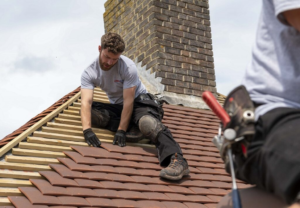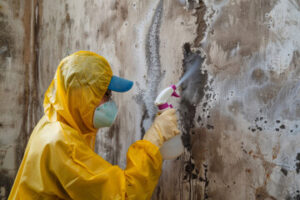Roofers are experts in roof repair, installation, and maintenance. They work with a team to ensure top-quality service and have the tools and tech to get the job done right.
Residential roofers repair and install roofing materials, including shingles, single-ply, bitumen, and metal. They also inspect and repair existing roofing materials.

Residential roofers work on single- and multi-family homes, including apartment complexes. Their job involves navigating through residential neighborhoods, working on rooftops with ladders or scaffolding, and communicating with homeowners. This type of roofing typically includes new roof installations and repairs, inspections for real estate companies, insurance claims and shingle replacements. Residential roofers may also install skylights and solar panels. If a residential roofer is in retail sales, they will usually have a customer service department to handle any issues that arise. They also offer a range of options, including zero-interest financing. These roofers typically give a long, two- to four-hour sales presentation before starting the project.
Commercial
Commercial roofers work on larger buildings, typically with more complex roof structures. They have experience with many different kinds of flat roofing materials, including EPDM, PVC and TPO. These roofs tend to be higher than residential ones, so it’s important for a commercial roofer to have excellent physical condition and be comfortable working at heights.
Commercial clients often have a specific idea of what kind of roof they want before asking for quotes. They may work with engineering firms or roofing consultants to decide on a roofing material, and they may specify certain specifications for their roofs, such as a type of warranty.
Because of these specialized needs, it’s important for a commercial roofer’s point of contact to be able to communicate effectively with all stakeholders on a project. Skujins tries to avoid projects where there are multiple points of contact and instead works directly with the engineer or project manager on his roofing jobs. He believes this makes the process smoother and more efficient for everyone involved. He also asks prospective customers for references from previous jobs so he can learn more about the customer’s expectations before bidding on a job.
Industrial
Industrial roofs require more robust roofing materials and designs due to the heavy loads placed on them from industrial processes. Industrial roofers install, repair, and maintain these types of roofs. They often work with a variety of roofing materials, including metal panels and single-ply membranes, depending on the specific requirements of the building in which they are working.
Roofers who work on industrial buildings also inspect the structures to identify and address any issues that may arise. They use specialized equipment and techniques to assess the integrity of the roof structure, detect leaks or moisture intrusion, and identify areas in need of repair or maintenance.
Roofing contractors must follow strict safety guidelines when working on rooftops, and many states regulate the roofing trade through licensing requirements. Workers who fall from the roof of a building are at risk for severe injuries, and they must use ladder safety devices, harnesses, and other tools to prevent falls.
The median annual wage for roofers is $50,030. The occupation is projected to grow 6 percent from 2023 to 2033, faster than the average for all occupations. This growth is attributed to the need for replacement and repair of existing roofing systems, as well as new construction.
Roof Structure
While the roof of a house may look like an insignificant covering that protects the inside from precipitation, there is far more to it than meets the eye. It has an internal structure, often called a truss, that creates a skeleton for the rest of the roof to build on top of. A few different types of trusses are used in the framing of a roof, and the type will determine the ability to add a loft or attic space later on, as well as ceiling height options for rooms inside.
The most common and familiar kind of roof structure is a gable roof, which has two planes of sloping walls that meet at a peak in the center, called a ridge. There is a gap where the rafters meet at the ridge, and this is covered with ridge tiles to help prevent rainwater from getting in through that space.
A more complicated roof structure is a lattice truss, which has wood strips on the outer side of the joists to hold up the shingles or tiles. A lattice roof can also have skylights to allow natural light into rooms below.
Another option for a roof is a rafter-beam truss, which has rafters based on the walls and a central joist, called the collar beam, to support them. This joist can be set higher than the joists around it, which can give a vaulted or tray ceiling appearance in certain rooms.
Other parts of a roof include drip edges, flashing and sheathing. Sheathing is a layer of material placed over the joists to provide additional insulation, as well as fire resistance and water protection.
Roof Deck
Just as the foundation is your home’s structural backbone, your roof deck (also known as sheathing) provides a solid base for the rest of your roof. The flat, sturdy sheets go over the rafters and joists of your roof framing, and from there, roofers secure all the other components that protect your home from the weather (like leak barriers and shingles).
Traditionally, roof sheathing was made from planks of wood, but today, most new homes are built with sheet sheathing. This is made from a flat, rectangular material that can be either plywood or OSB, and it comes in varying thicknesses, depending on the span of your rafters.
When constructing a new home, we typically use sheathing made from structural panels like plywood or OSB, because they help to transfer lateral loads from the roof plane to the walls of your house. We also offer sheathing made from solid wood tongue and groove boards if you’re building a custom home or have a preference for an exposed ceiling, but these don’t provide the same level of lateral load stability as panel sheathing.
If your home has old plank decking, it might be time to replace it. Water stains on interior walls or rafters, a drooping roofline, or curling or buckling shingles are all telltale signs that you need to have your decking replaced, and the sooner the better to stave off further damage. If you’re building a new house or doing a reroofing project, we recommend choosing either 3/8″ CDX plywood or 7/16″ OSB for your sheathing. Both are strong, durable, and cost-effective. They also meet code requirements for moisture protection.
Underlayment
A layer of underlayment protects the wood boards that make up your roof deck. This is important, since water can infiltrate a home’s structural wood, which leads to rot, mildew, mold and other problems. It also helps to prevent moisture from becoming trapped under shingles, which can lead to the formation of ice dams and a host of other issues.
Typically made from either asphalt-saturated felt or synthetic materials, roof underlayment acts as an extra barrier to prevent water that rises during a rainstorm from infiltrating the roof structure and into your home. In addition, it provides an additional insulation layer and reduces condensation that can contribute to roof damage, poor energy efficiency and even health issues for occupants.
While a variety of underlayment options exist, traditional felt underlayment is still common and meets most building code requirements. It is generally available in 15- and 30-pound thicknesses for different types of roofing pitches. Felt can be fastened using staples or nails, though in high-wind areas and with synthetic underlayment, plastic caps are often used because they offer better wind resistance and help to prevent leakage through holes created by the fasteners.
Synthetic underlayment is more resistant to fungal growth, less likely to wrinkle and has superior water resistance than felt. It’s lightweight and easier for workers to work with, reducing physical strain on them and allowing the installers to get a job done faster. It’s available in a wide range of colors to match or complement the color of your roof shingles, and it’s often used under premium designer, architectural and performance shingles.
If you live in a cold climate, it’s recommended that an ice barrier underlayment be installed. This is a self-adhering, waterproof underlayment that helps to limit the flow of melt-water back up under shingles, which could cause ice dams and other water damage.
